AVENTURINE
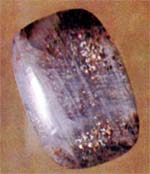 Characteristics of the mineral.
Characteristics of the mineral.
For this group, the question is how to distinguish from a fake.
It belongs to the group of feldspars and has obligatory inclusions of flakes of hematite and goethite (in potassium feldspar and oligoclase) and magnetite, less often - native copper (in labrador). Synonyms: aventurine (field) spar, aventurine labrador, advanturine, heliolite, solar stone. A shimmering tide with green, golden, red sparks. Scales shine in the light. Natural stones are very rare. All that is mass sold in stores (golden brown and black aventurines with bright sparkles) is a glass imitation with the addition of copper, iron, chromium and cobalt oxide to the molten mass of glass (photo on the right). Excessive abundance of sequins usually speaks of forgery. According to legend, in the sixteenth century Venetian glass blowers accidentally received a glass imitation of this stone (adventurin glass). In fact, adventurous glass knew how to make even the ancient Egyptians in India.
The color of natural stone is white, light gray, honey, pink, brick, cherry, green. Saturated colors are not uncommon, but glitter - yes. In shops, green aventurine sometimes comes in the form of jade (visually difficult to distinguish, but jade does not contain sparkles). In order to distinguish aventurine from other minerals, it is necessary to establish the presence of small spangles and scales. Sometimes a mineral may show weak iris. In Russia, the 18-19th centuries. The most beautiful examples of aventurine were used for insertions in female jewelry. He made candlesticks, pens of forks, knives, vases, prints. Painted aventurines are usually in yellow, green, brown, blue, cherry and black tones. Aventurin has long been mined in China, where it was called the imperial stone. Samples of natural aventurine can be quite plain, and luxurious shimmering multicolored and sparkling gold sparks minerals.
Sunstone or heliolite are microcline-perthites (feldspars), sanidins, oligoclases and albites, which are iridescent in golden, yellow, red tones, due to the microinclusions in them of hematite and goethite. Opaque sun stone, aventurine spar, is often used as an ornamental stone. Jewelery, products are also made of transparent ferriortoclase, ferrous sundine with golden tint. Their findings are on about. Madagascar, in Mozambique, Russia, etc. Natural aventurine today is a very rare and expensive ornamental stone.

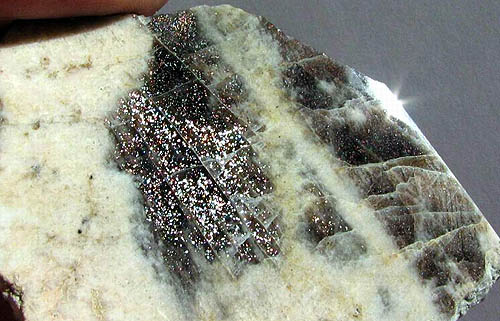
Anorthoclase. A sunny stone. Polished sample anorthoclase with the effect of solar stone
(Due to inclusions of hematite) and moonstone. Potanins of the mountain, Yu. Ural, Russia. Photo: © А.А. Evseev.
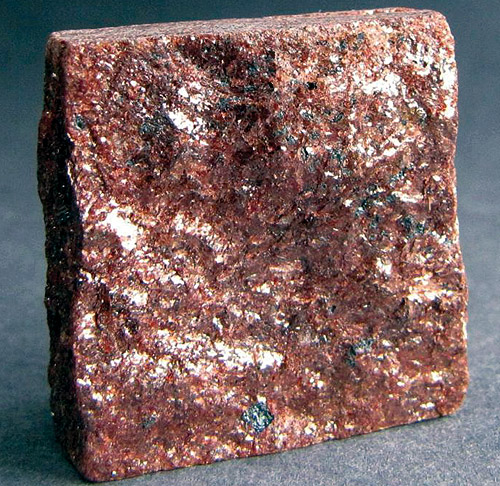
Aventurine. Taganay, Ural. Russia (Russia, CIS). Photo: © А.А. Evseev.
Magic properties of stones.
Aventurine is a talisman of love and passion, mystical revelations and unexpected actions and decisions. Talisman for the preservation of joyful mood. It gives the owner depth and emotional purity. It is assumed that in Europe natural aventurine was brought by traders of Indian gemstones, who had first-hand experience of the ability of this stone to attract good luck. Aventurine (especially quartz) clears the etheric, emotional and mental bodies and space around the wearer. It gives birth to a happy and joyful mood, harmonizing the body and soul. Modern researchers of aventurine (feldspar) often misunderstand the properties of this stone, associating it with cheating and playing on the stock exchange. In fact, aventurine is associated not so much with gambling as with pure love. It sharpens all emotions, making them more subtle, increases optimism and self-confidence, raises the mood. The most favorable for people who do not have a lot of responsibility, or for those who want to throw off the burden of unnecessary responsibility, who are troubled by memories and dreams burdened by the agonies of conscience, and also for children who have not yet entered into an independent life.
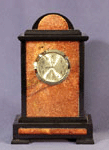
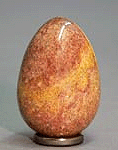

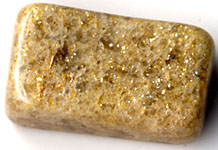
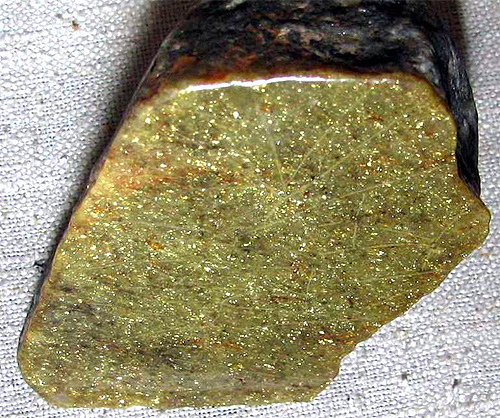
Imitation of aventurine from glass
 Most imitations today are made of glass of different quality with various additives (Savrovsky stones, glass rhinestones, black and gold aventurine, colored cat's eye, milk moonstone, green chrysoberyl, opal glass, etc.). Natural stones are very rare.
Most imitations today are made of glass of different quality with various additives (Savrovsky stones, glass rhinestones, black and gold aventurine, colored cat's eye, milk moonstone, green chrysoberyl, opal glass, etc.). Natural stones are very rare.
All that is mass sold in stores is a glass imitation with the addition of copper, iron, chromium and cobalt oxides to the molten mass of glass (photo on the right), actually painted glass with shiny inclusions. Excessive abundance of sequins usually speaks of forgery. Historically, aventurine glass was invented independently in different countries of the world. The color of natural stone is white, light gray, honey, pink, brick, cherry, green. Saturated colors are not uncommon, but glitter - yes. In order to distinguish aventurine from other minerals, it is necessary to establish the presence of small spangles and scales, which are usually poorly visible in natural stones. Sometimes a natural mineral, unlike synthetics, can exhibit weak iris, while synthetic aventurine can simply glisten strongly. In glass imitation, flakes can sometimes be unevenly located, there are zones of colored glass with reduced glitter content or without them at all. The most common are glass imitations of golden brown or blue-black color with an abundance of bright and beautiful scales. This is the most striking aventurine, the natural is often much paler.


Poisonous and radioactive dangerous stones and minerals
** - poisonous stones and minerals (mandatory check in the chemical laboratory + explicit indication of toxicity).
** - radioactive stones and minerals (mandatory check on the standard dosimeter + ban on open sales in the case of radioactivity over 24 milli / g / h + additional measures of population protection).
All rare stones are subject to mandatory inspection at the standard dosimeter for the permissible level of radiation and in the chemical laboratory for the absence of poisonous and evaporating components that are dangerous to humans and the environment.


Comments
When commenting on, remember that the content and tone of your message can hurt the feelings of real people, show respect and tolerance to your interlocutors even if you do not share their opinion, your behavior in the conditions of freedom of expression and anonymity provided by the Internet, changes Not only virtual, but also the real world. All comments are hidden from the index, spam is controlled.